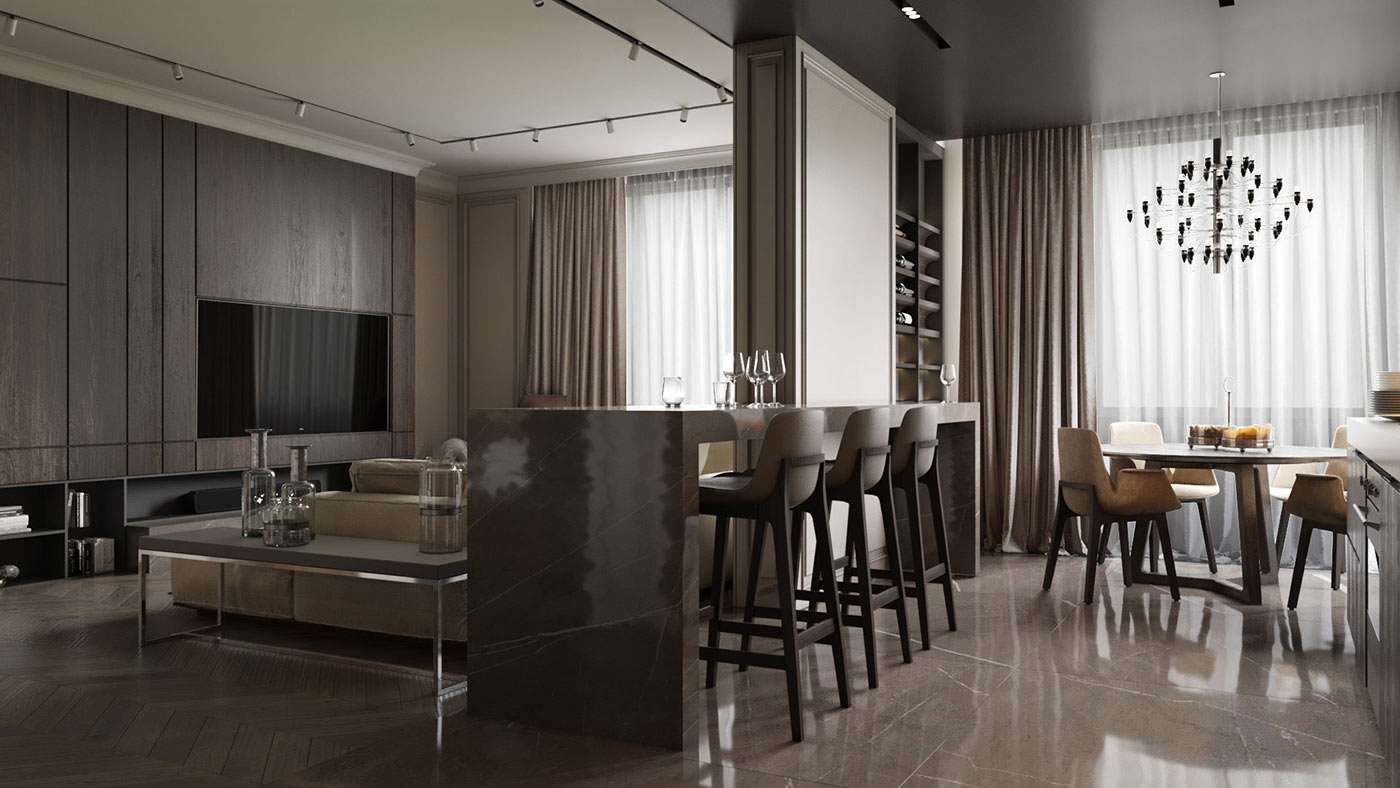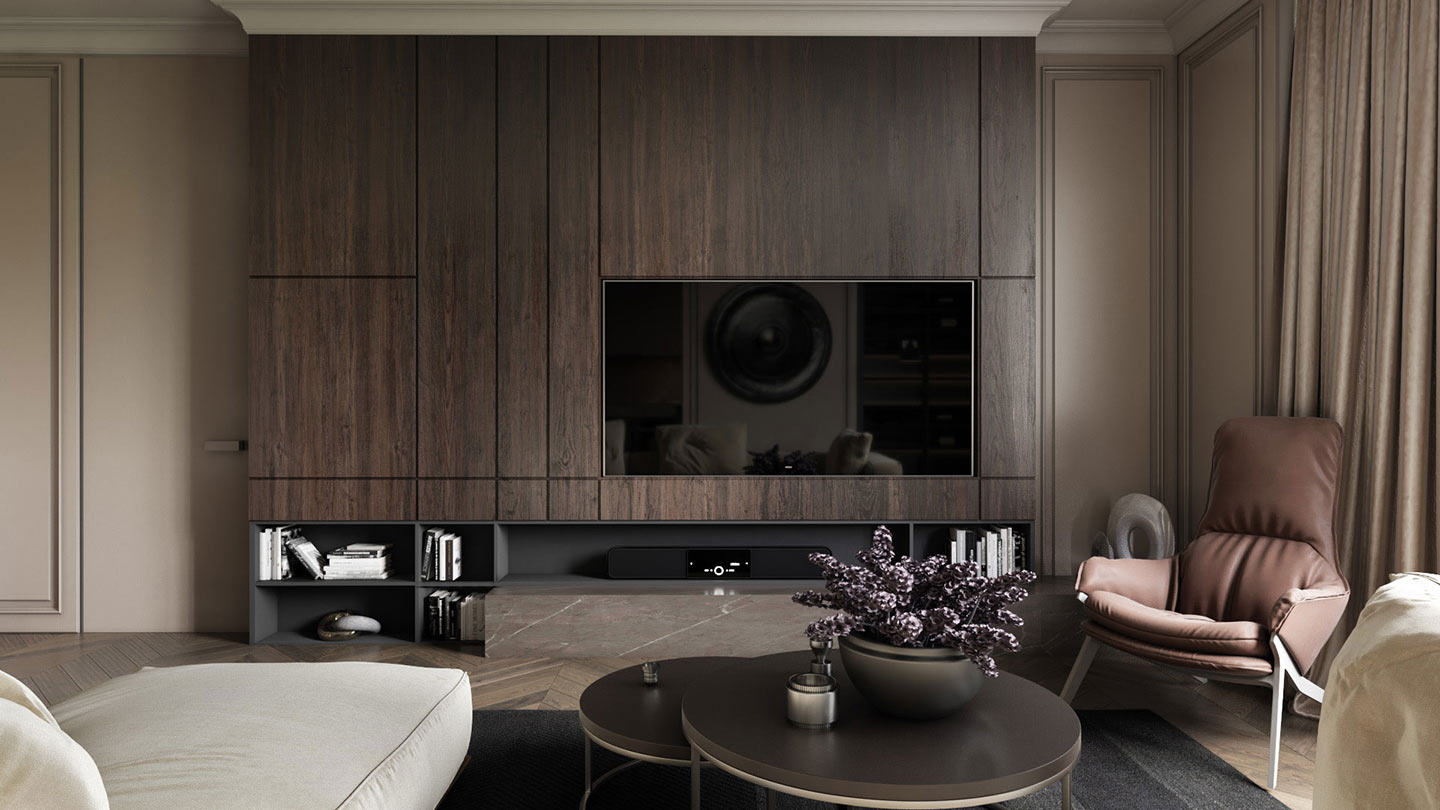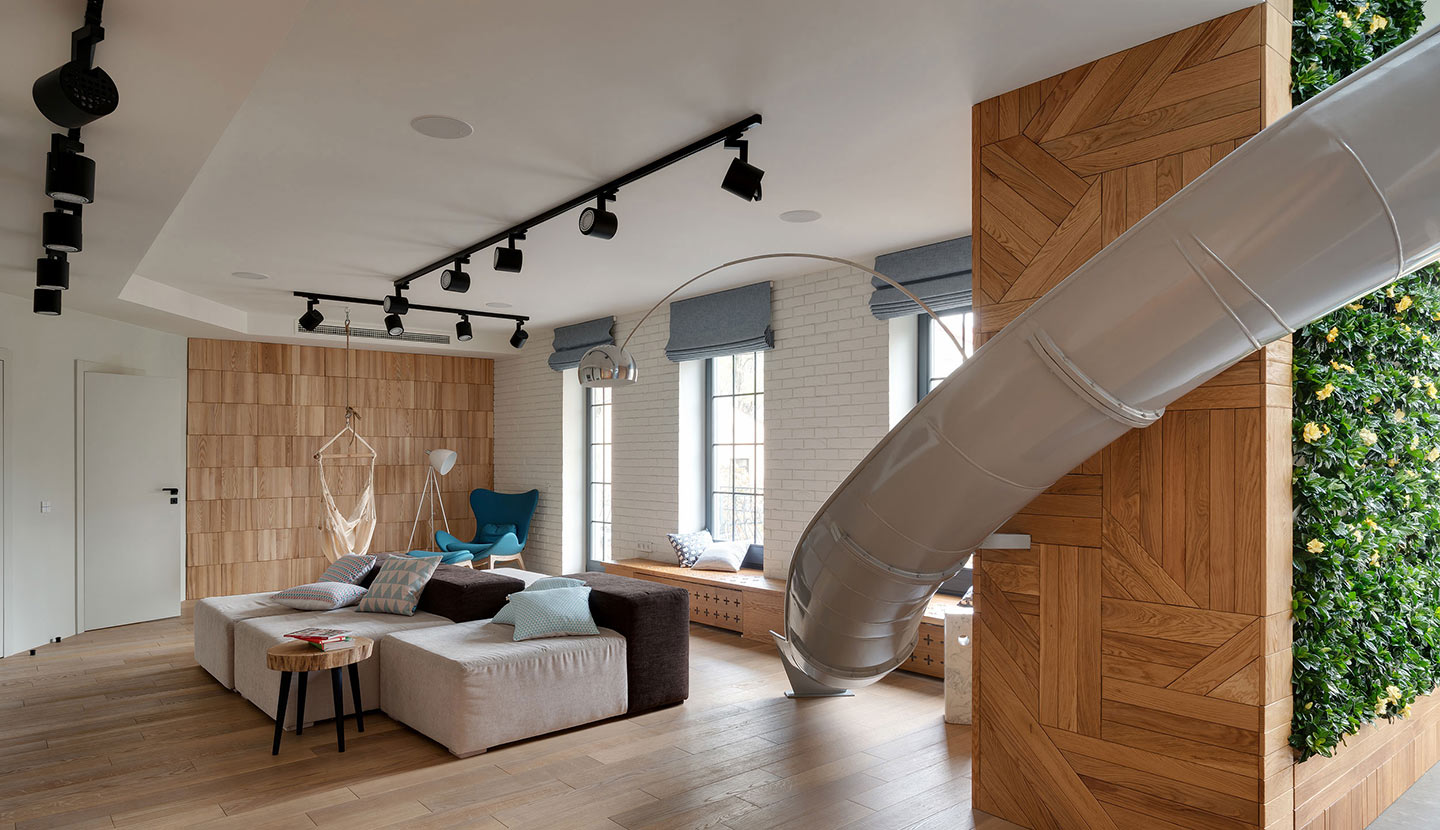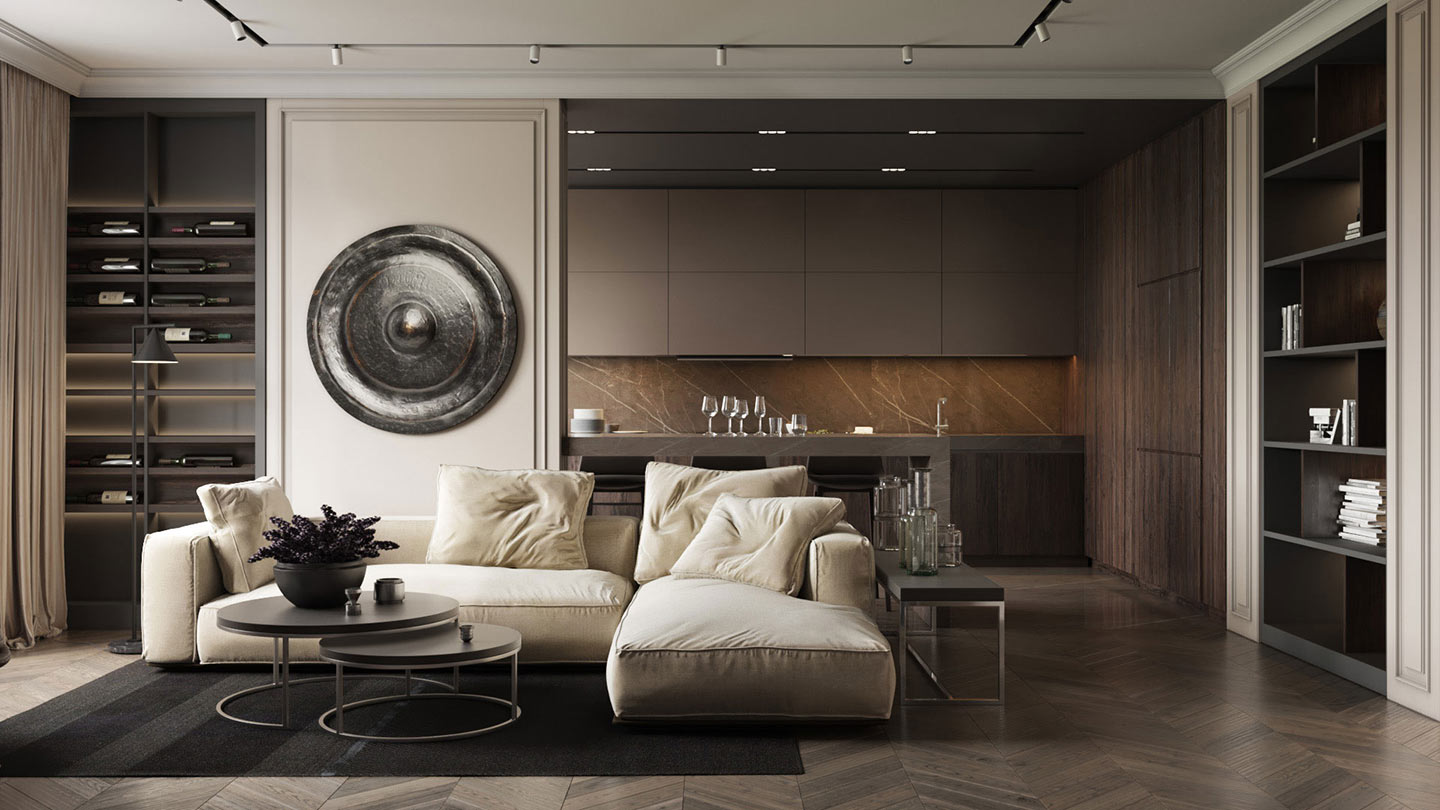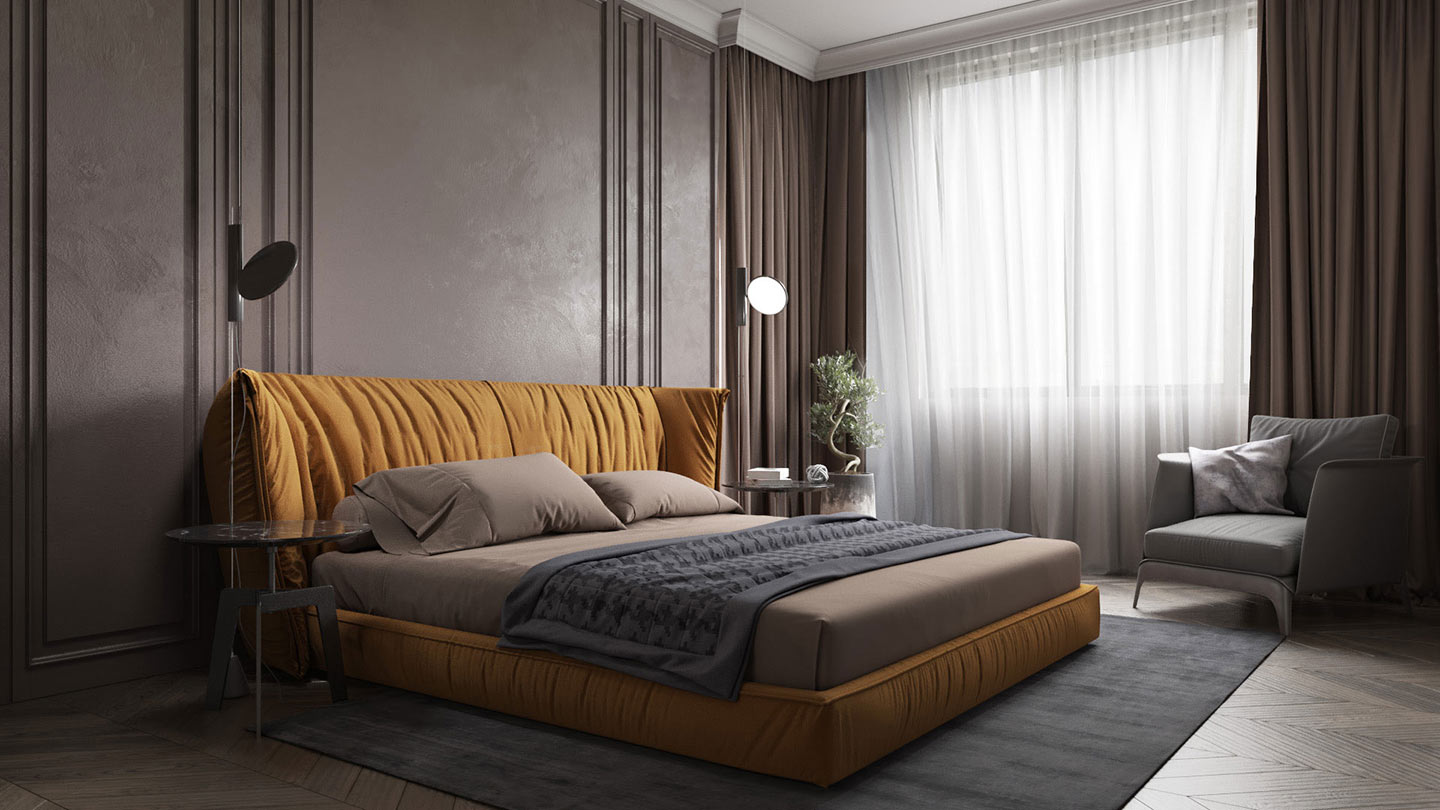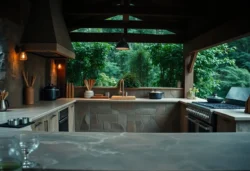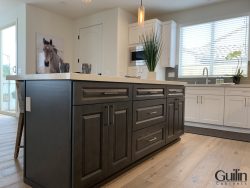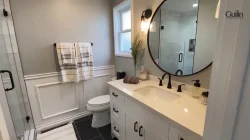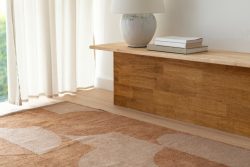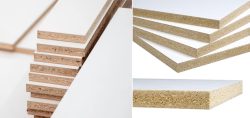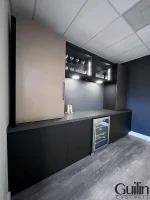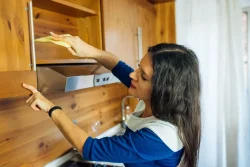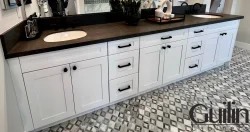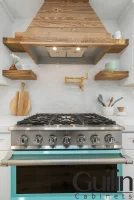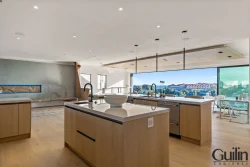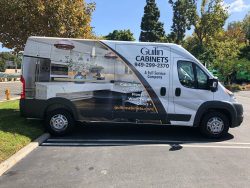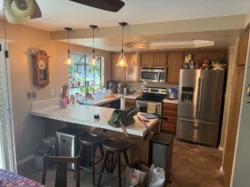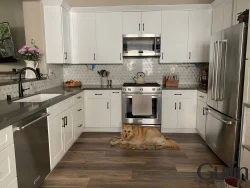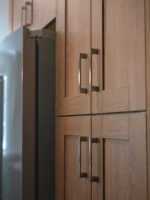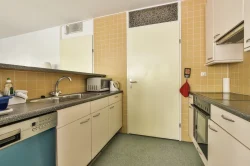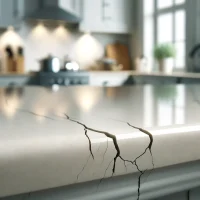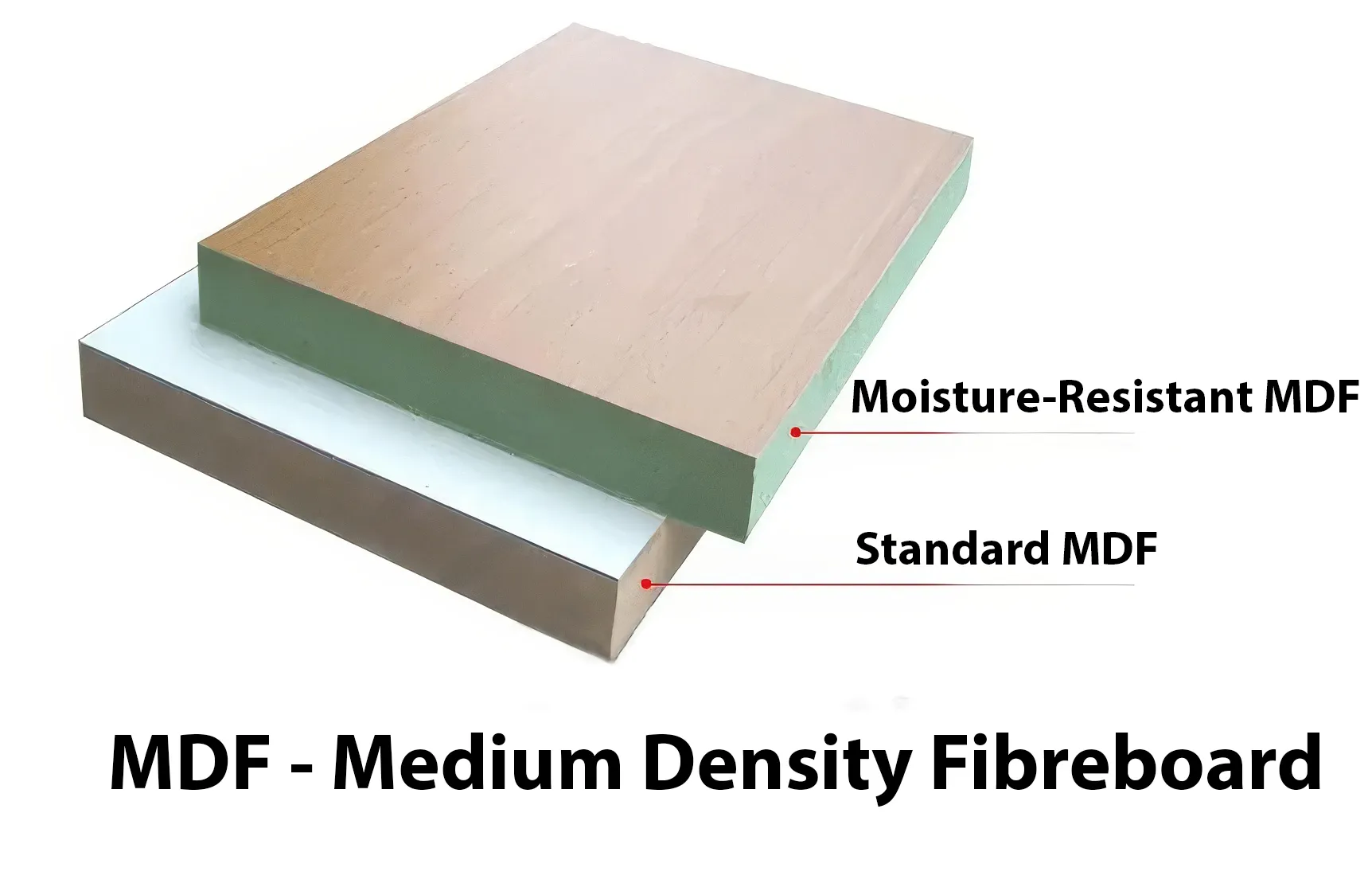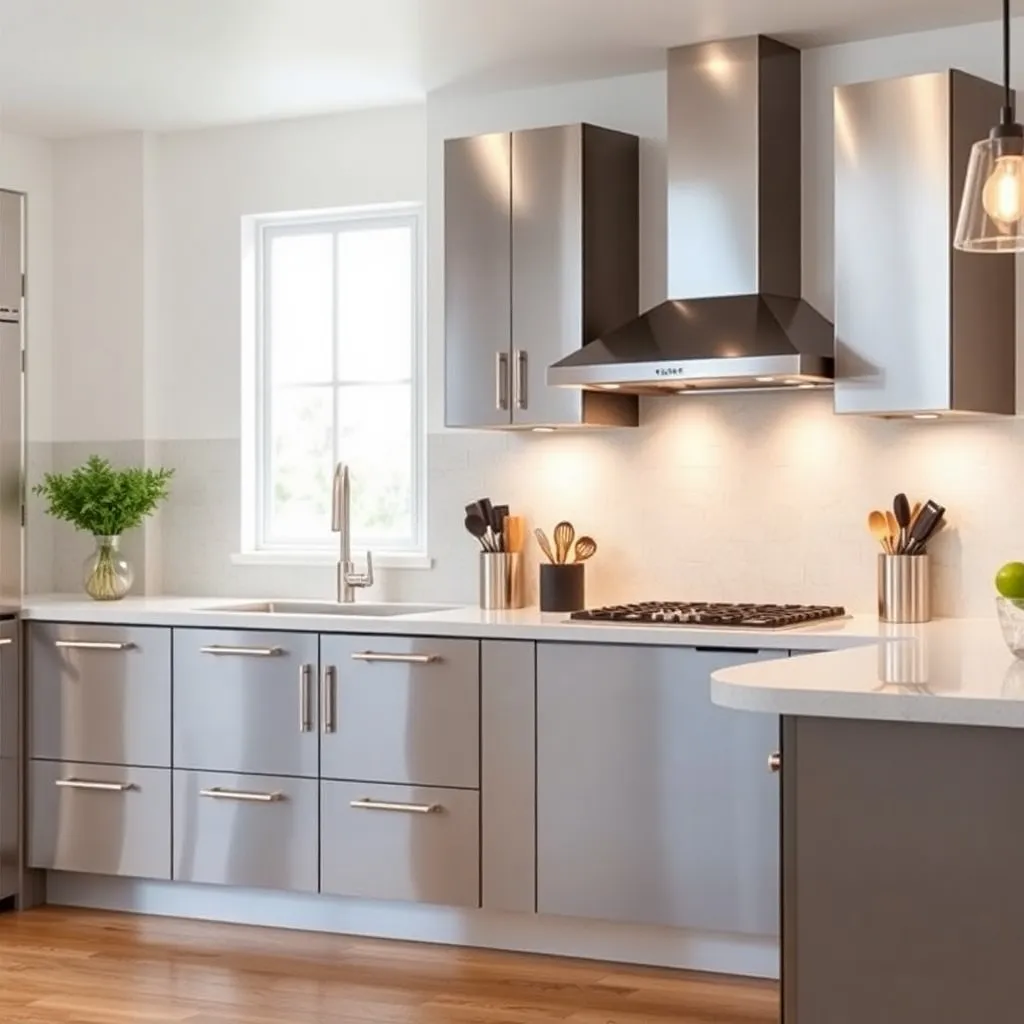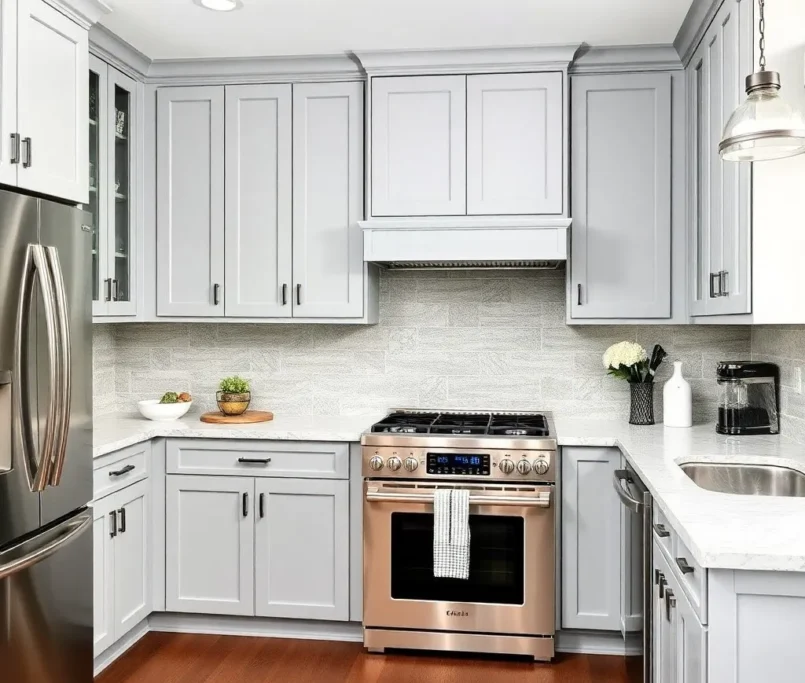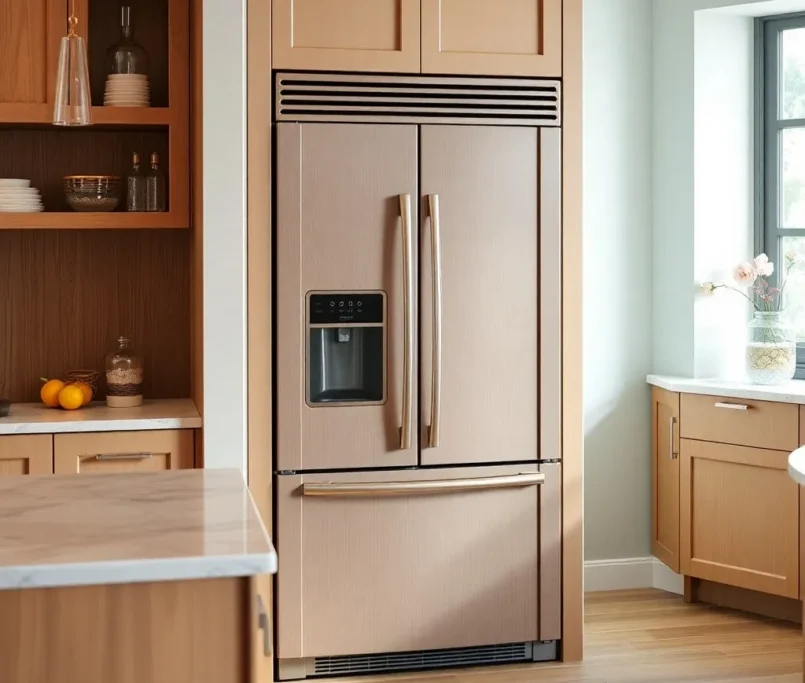Understanding the reasons behind the popularity of HDF kitchen cabinets is crucial. HDF is known for its superior strength, durability, and smoothness compared to traditional MDF, making it a great choice for high-traffic kitchens. However, it’s important to consider the higher cost, heavier weight, and limited water resistance of HDF, which may affect your installation and maintenance choices. This guide aims to help you evaluate the pros and cons of HDF cabinets so you can determine if they suit your kitchen requirements and design preferences.
=> Read more: HDF VS MDF Cabinet Material – What Different?

What Is HDF?
With HDF, or High-Density Fiberboard, you’re dealing with an engineered wood product that has been designed to offer greater strength and durability compared to other fiberboards. It is produced by compressing wood fibers combined with resin and heat, resulting in a material that is dense, hard, and highly sturdy. This density gives HDF its ability to withstand wear, making it a popular choice for applications like kitchen cabinetry where daily use is intense.
=> Read More: 10 Common Cabinet Materials
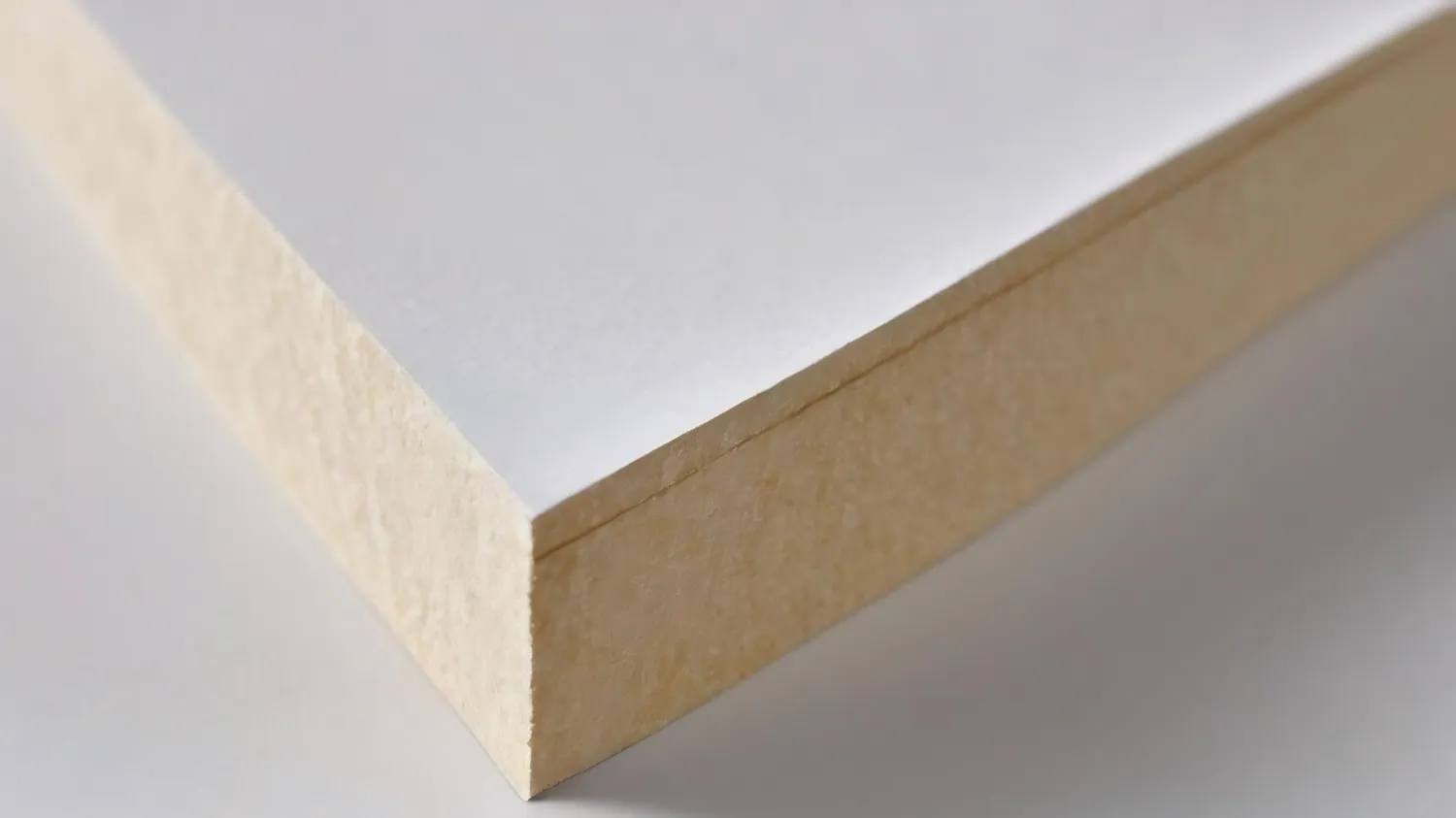
While similar to MDF, HDF’s composition allows it to perform better under conditions that would typically challenge other materials. When you install HDF cabinets, you benefit from a smooth surface that’s free from grain and knots, which provides an ideal base for a flawless painted finish or thermofoil wraps. Its robust nature helps you maintain your kitchen cabinets’ quality over time.
Comparison with MDF
At first glance, HDF and MDF may appear quite similar, as both are engineered wood products made by compressing wood fibers with resin and heat. However, the key difference lies in their density and strength. HDF is significantly denser and harder than MDF, which means it can endure more impact and wear in everyday use.
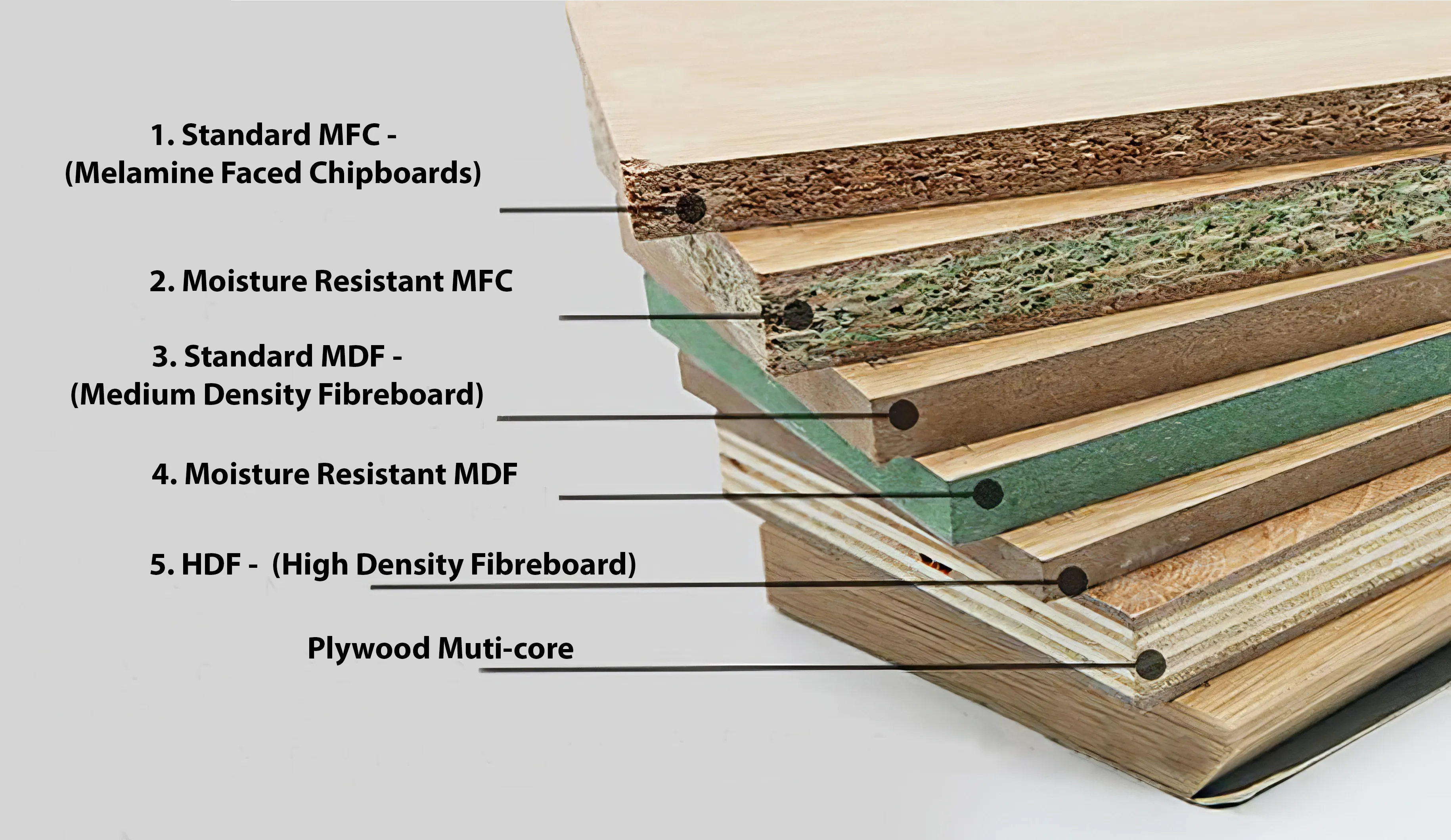
The Comparison Table: HDF vs MDF
| Feature | HDF |
|---|---|
| Density | Higher density providing increased durability and resistance to damage |
| Strength | Stronger, better suited for high-traffic areas |
| Surface | Smooth and uniform, perfect for painted or thermofoil finishes |
| Water Resistance | More resistant than MDF but still not fully waterproof |
| Weight | Heavier than MDF, requiring adequate support during installation |
| Price | More expensive than MDF but generally less than plywood |
With these differences in mind, you can see why HDF is often recommended for applications where strength, durability, and a high-quality finish are important. If you’re comparing options for kitchen cabinets, HDF offers you advantages in handling and aesthetics, though it does come with a slightly higher price point and requires careful consideration for moisture exposure due to its limited water resistance.
About HDFMR?
HDFMR is a type of engineered wood board that combines the strength of HDF (High-Density Fiberboard) with the added protection of moisture resistance. It’s made by compressing wood fibers with resins and special moisture-repelling additives, then pressing it under high heat and pressure to create a dense, durable sheet. This material is often used in areas where both strength and some water resistance are needed—like kitchen cabinets, bathroom vanities, wardrobes, and wall paneling.
Key Features of HDFMR:
- Very strong and dense — stronger than standard MDF or even regular HDF
- Smooth surface — perfect for painting or laminating
- Moisture-resistant — ideal for kitchens, bathrooms, and humid climates
- Dimensionally stable — doesn’t warp or crack easily
- Good machinability — can be routed or carved for detailed designs
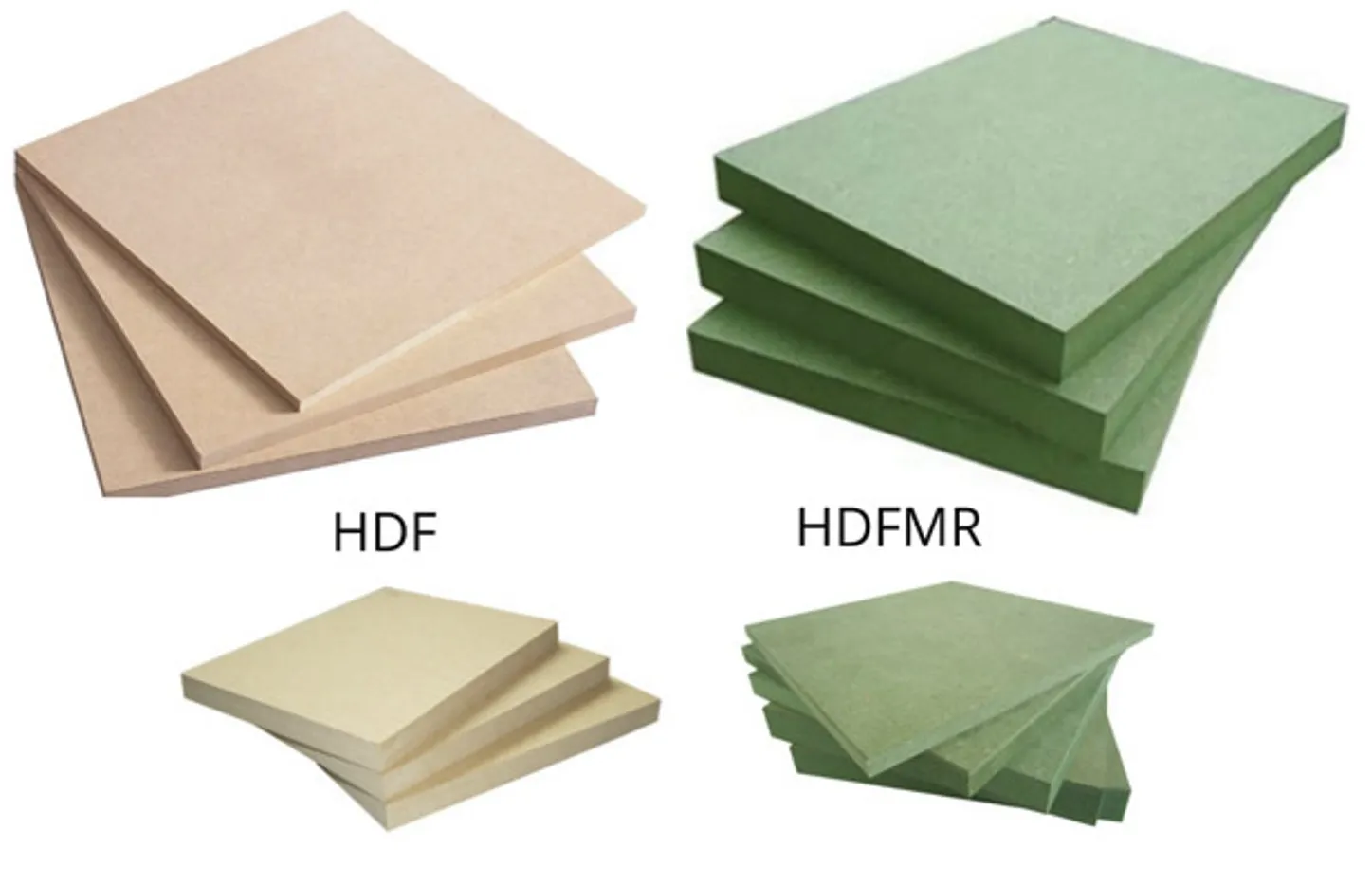
Where HDFMR Used:
- Painted or laminated kitchen cabinet doors
- Bathroom furniture in humid areas
- Wardrobes and other home interiors
- Wall panels in commercial or residential projects
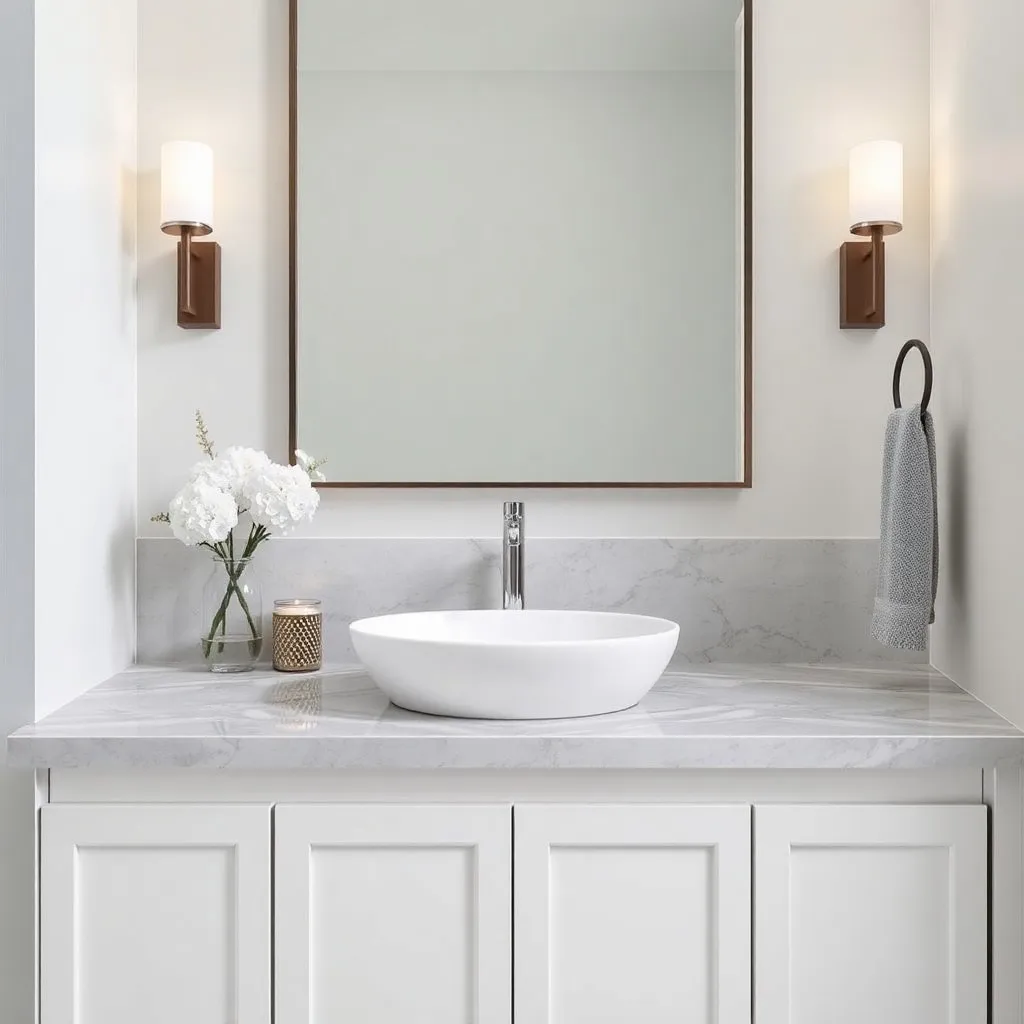
HDF Cabinets Pros and Cons
Pros of HDF Kitchen Cabinets
Some of the key benefits of choosing HDF kitchen cabinets lie in their exceptional strength, superior surface finish, resistance to warping, and precise detailing capabilities. These advantages make HDF a popular choice for homeowners looking for durable and attractive cabinetry that stands up well to everyday use and stylistic demands.
Very Strong and Durable
Beside being denser than MDF, HDF offers you significantly greater strength and impact resistance, allowing your cabinets to endure the rigors of busy kitchens. This means that your cabinets will hold up better under frequent opening, closing, and handling without showing signs of wear or damage.
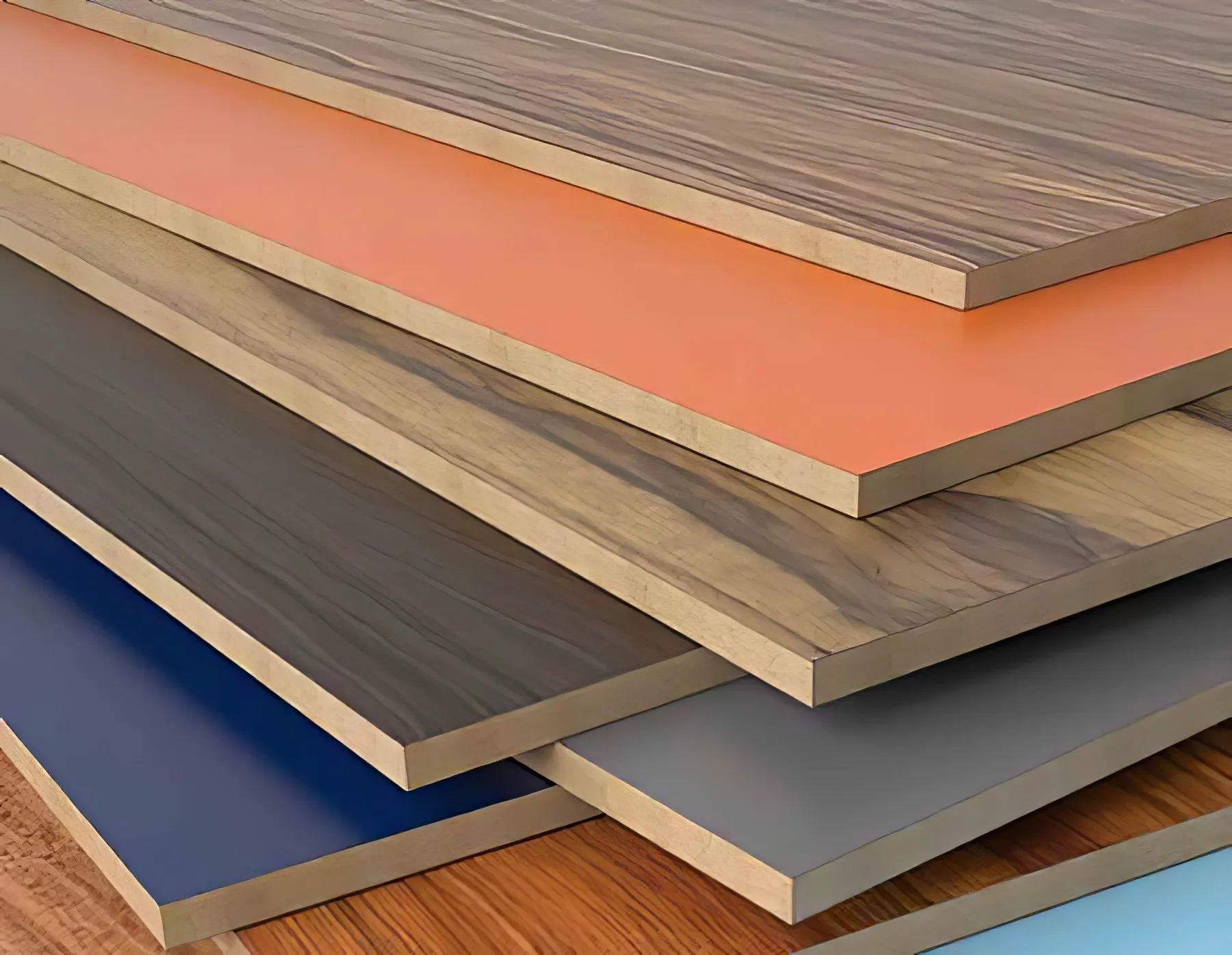
Because of its harder and more compressed nature, HDF can withstand daily use with less risk of dents, scratches, or deterioration, giving you cabinetry that lasts longer and maintains its look through years of kitchen activities.
Smooth Surface for Finishes
itchen cabinetry often serves as a central design element, and HDF provides an exceptionally smooth and uniform surface that is perfect for high-quality finishes. This means you can enjoy an even paint application or flawless thermofoil wrap without worrying about imperfections caused by grain or knots.

Quality finishes not only improve the visual appeal of your kitchen but also protect the cabinets, helping them retain their pristine look over time. Since HDF lacks natural wood grain, your painted surfaces will appear clean and consistent, letting you customize your kitchen style exactly how you want it. Quality surface finish with HDF ensures that your cabinets stay visually appealing while offering a perfect canvas for creative cabinetry designs, whether you prefer matte, gloss, or textured finishes.
More Resistant to Warping
Behind HDF’s excellent performance is its high density, which makes it considerably less prone to warping and cracking than natural wood. This means your kitchen cabinets will maintain their shape and smoothness even in fluctuating humidity and temperature conditions that commonly affect wooden cabinets.
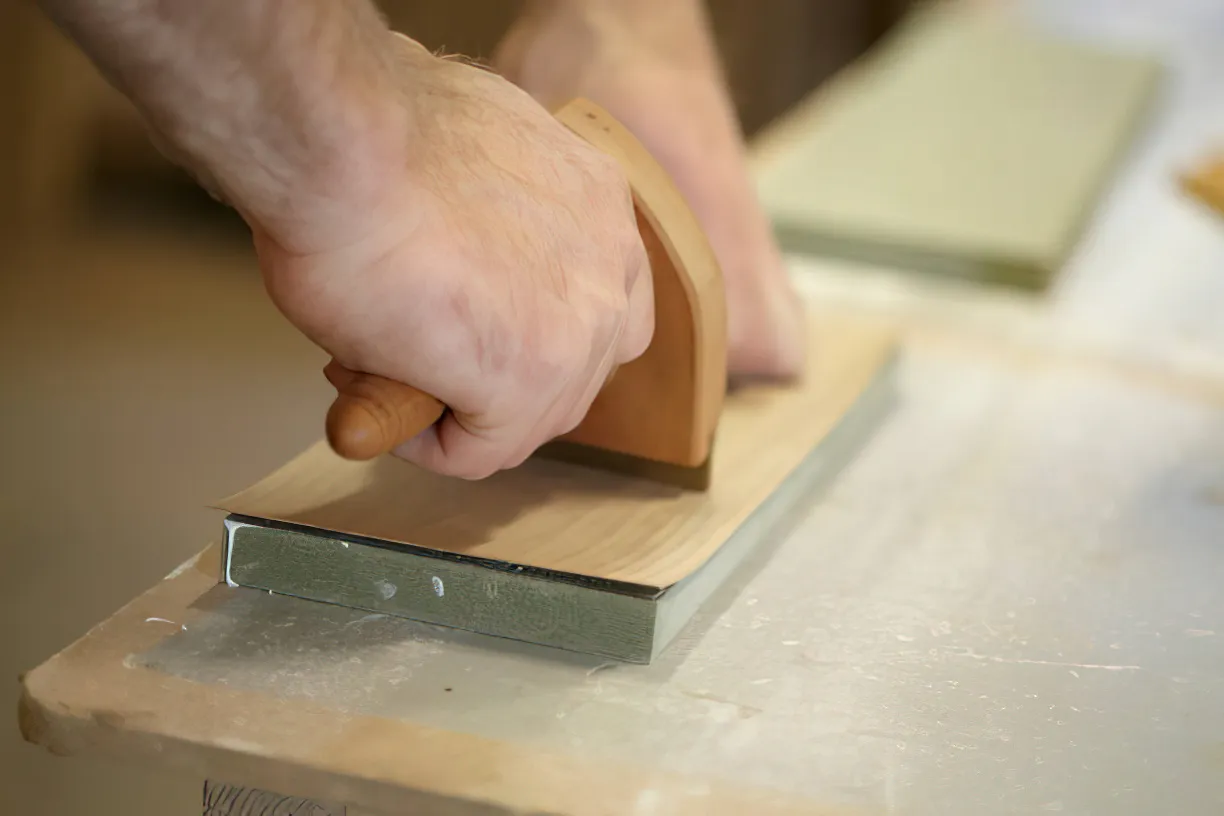
You benefit from cabinetry that reacts less dramatically to changes in moisture, an important factor in kitchens where steam and varying temperatures can cause issues with other wood products. Advantages of HDF’s resistance to warping include longer-lasting cabinet integrity and less risk of damage that requires costly repairs or replacements, giving you peace of mind about the durability of your investment.
Better for Precision Detailing
One of the standout advantages you gain with HDF is its hardness, which allows for sharper, cleaner edges and more intricate detailing than you would typically achieve with MDF or plywood. This capability is ideal if you want shaker-style doors, raised panels, or other decorative profiles that require precise craftsmanship.
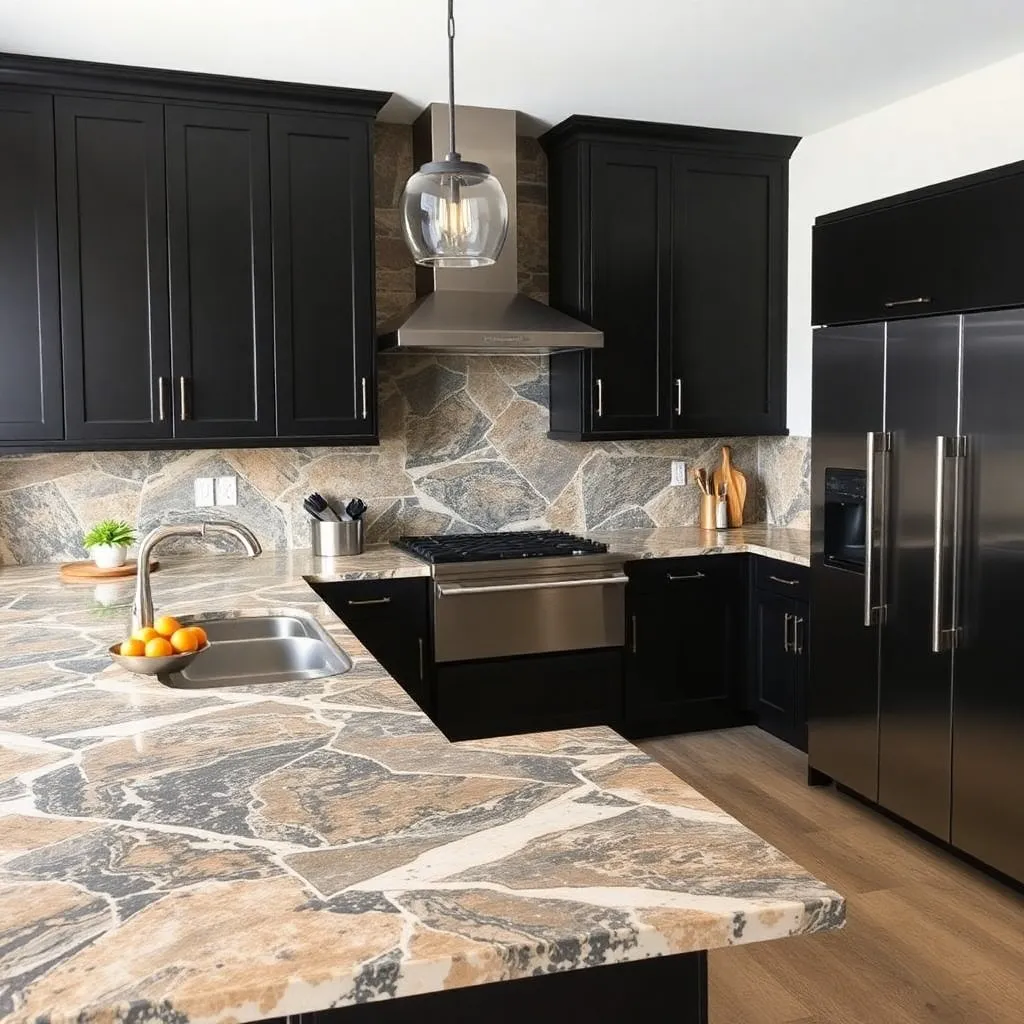
This means your kitchen cabinets can feature elegant and well-defined designs without compromise, enhancing both the aesthetic and value of your kitchen space. The precision in detailing provided by HDF allows you to embrace fine woodworking styles and
Cons of HDF Kitchen Cabinets
Despite its many benefits, HDF kitchen cabinets do come with certain drawbacks that you should consider before making a decision. Understanding these disadvantages can help you weigh whether HDF is the right choice for your kitchen environment and budget.
More Expensive Than MDF
Against the backdrop of other engineered wood products, HDF tends to be more expensive than MDF. While it offers greater durability and density, this comes at a price point that often sits between MDF and plywood. If you’re working with a tight budget, this increase in cost may influence your cabinet selection.

Moreover, because HDF is denser and requires specific hardware to support its weight during installation, additional expenses can arise beyond just the material cost. You’ll want to factor these costs into your remodeling or building plans to avoid surprises.
Still Not Fully Water-Resistant
Between natural wood and MDF, HDF provides improved resistance to moisture but it is still not fully waterproof. If your kitchen experiences high humidity or frequent exposure to water, unsealed edges of HDF cabinets can absorb moisture and swell over time, leading to damage.
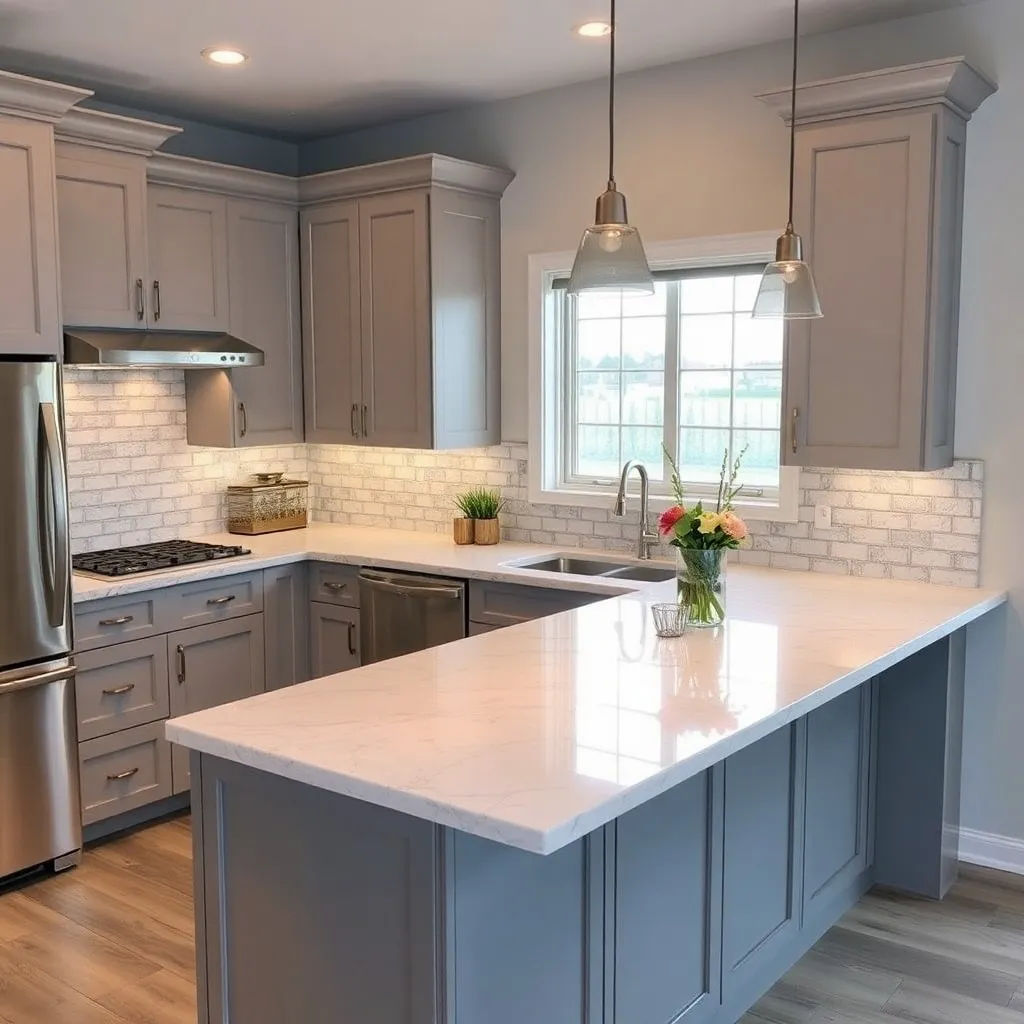
While it performs better than MDF in damp conditions, HDF requires careful sealing, especially on exposed edges, to maintain its structural integrity. Failing to do so could mean dealing with warping or deterioration sooner than you expect. Understanding these limitations is important because water damage can significantly shorten the lifespan of your cabinets. If your kitchen is prone to spills or steam, investing in proper sealing or alternative materials might be necessary.
Difficult to Repair
Around the topic of maintenance, repairing HDF presents its own difficulties. Because of its engineered nature and dense composition, fixing chips, dents, or other surface damage can be more complicated than with solid wood. Repair attempts may be obvious and not blend seamlessly with the original painted or thermofoil finish.
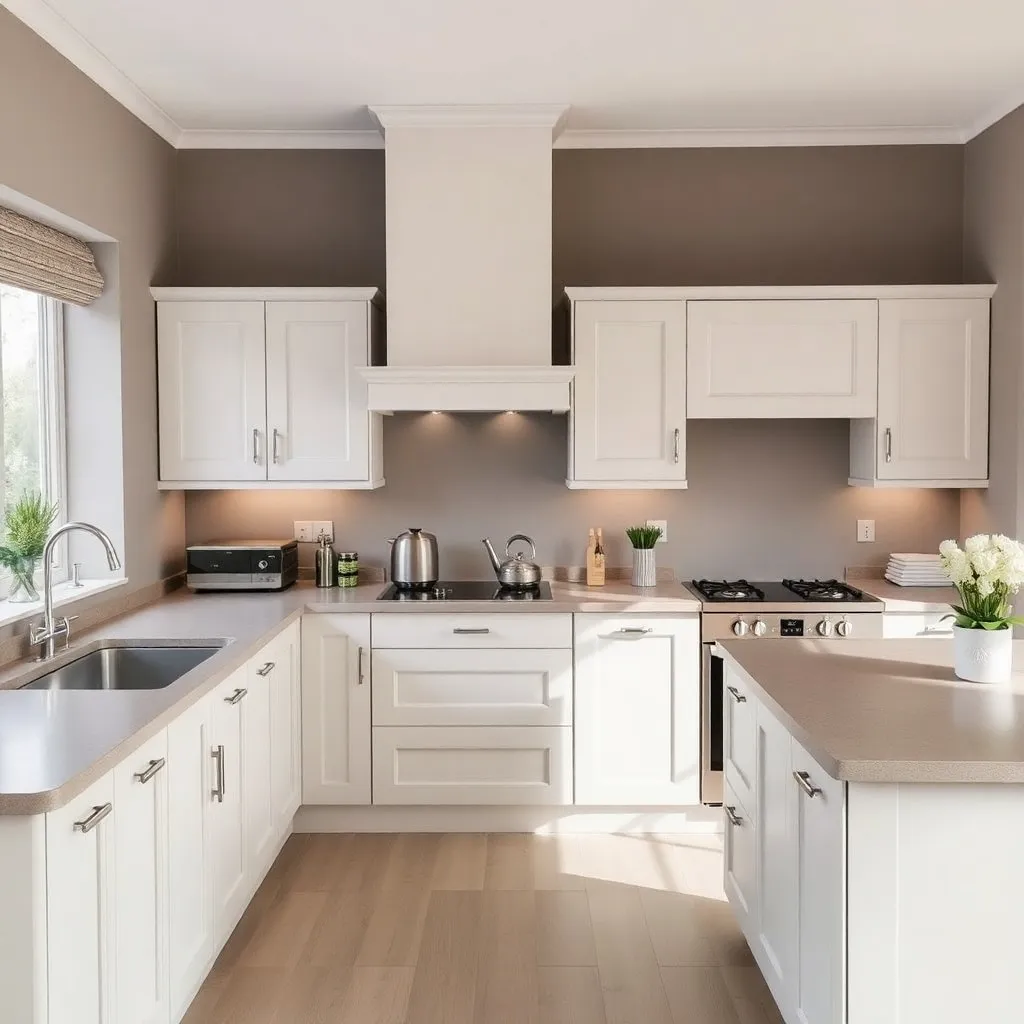
In many cases, replacement rather than repair is the recommended solution for damaged cabinetry made from HDF. This means higher costs and inconvenience if your cabinets suffer wear and tear over the years. At the heart of this concern is the fact that imperfect repairs can detract from the sleek, uniform appearance that makes HDF appealing. If maintaining pristine aesthetics is important for you, this may factor heavily into your decision-making.
Expert Recommendations for HDF Cabinets
Ideal Kitchen Environments
Among various kitchen settings, HDF cabinets perform best in environments where there is moderate use and limited exposure to moisture. Because HDF is denser and stronger than MDF, it holds up well in busy kitchens that experience daily handling, but it is important to avoid placing HDF cabinets in areas prone to high humidity or water contact. Kitchens with good ventilation or controlled humidity levels provide the ideal surroundings to maintain the integrity and appearance of your HDF cabinets over time
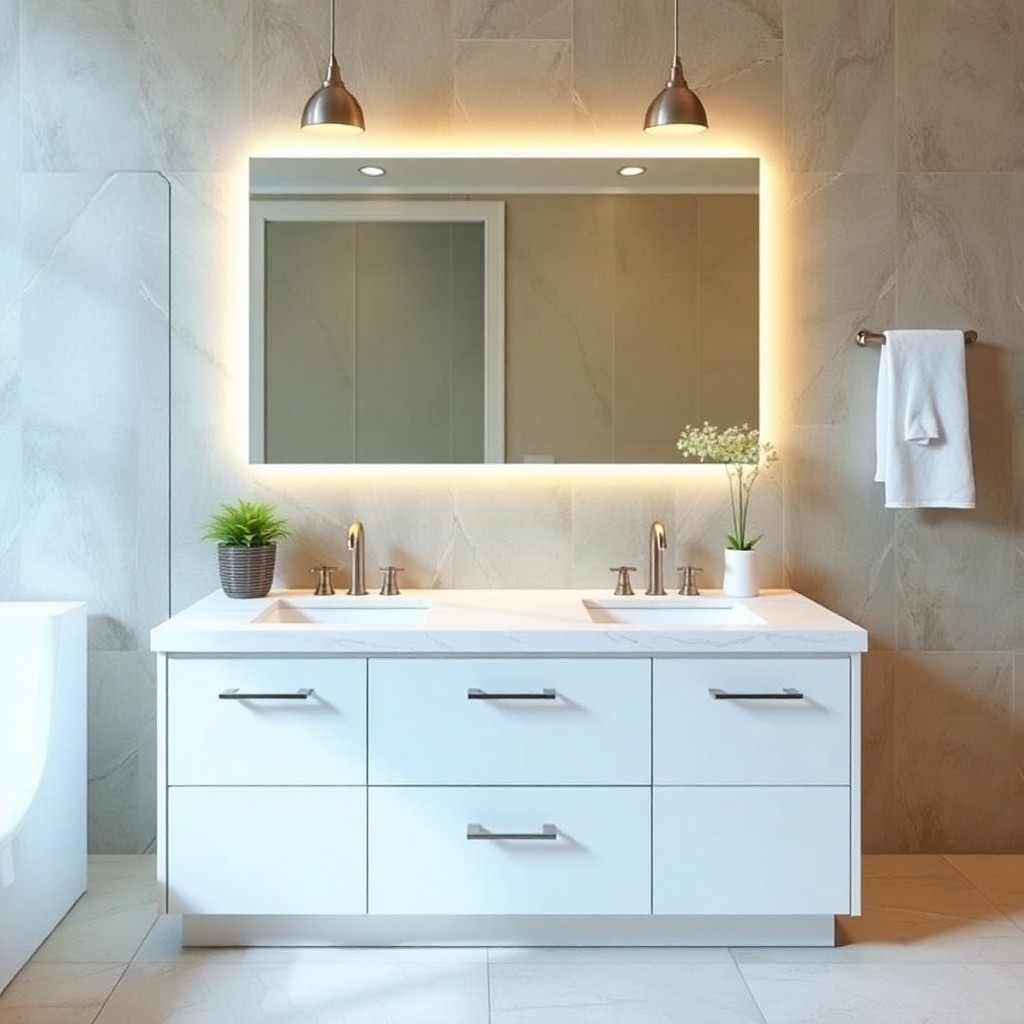
You should also consider the type of activities commonly carried out in your kitchen. If you have a household that frequently cooks but does not expose the cabinetry to excessive steam or direct water splashes, HDF kitchen cabinets offer a durable and aesthetically pleasing option. However, in kitchens where water exposure is frequent—such as near sinks or dishwashers—additional sealing and careful maintenance will be necessary to prevent swelling or deterioration of the cabinet material.
Design Compatibility
Kitchen designs that emphasize smooth, modern finishes benefit greatly from HDF cabinets because of their perfectly uniform surface. Since HDF lacks natural wood grain, it is an excellent choice if you want a clean, painted look or plan to use thermofoil wraps. The material’s hardness also allows for precise detailing on shaker-style doors or raised panel designs, making it versatile for both contemporary and classic cabinetry styles.
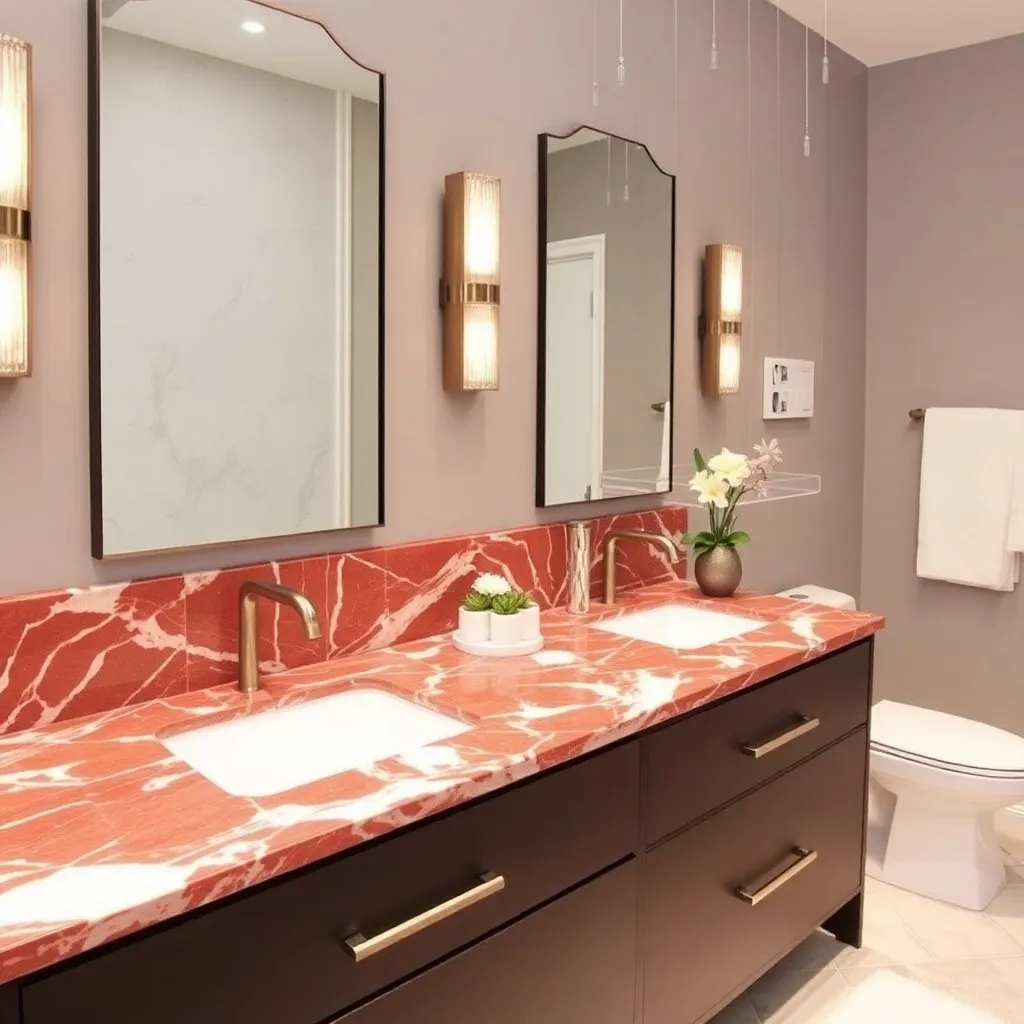
When identifying cabinetry to match your design vision, consider that HDF cabinets do not naturally feature wood textures or patterns. This can be a positive trait if you prefer a minimalistic or sleek aesthetic but might be a limitation if you want the warmth and character of natural wood grain. Using paints and finishes specifically formulated for engineered woods will amplify the smoothness and durability of your cabinet surfaces.
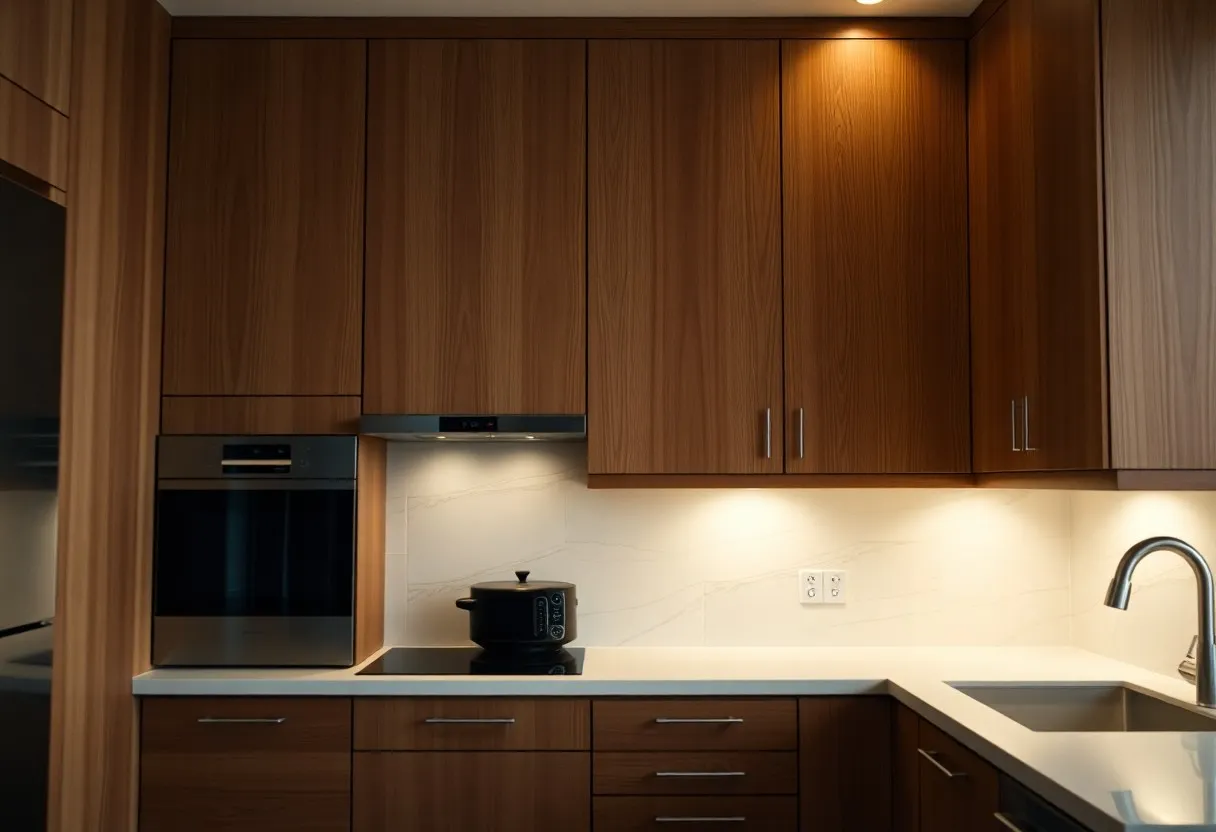
Hence, choosing HDF means you are prioritizing functionality and a flawless finish over the natural wood look. If you value detailed craftsmanship and durability in your cabinetry’s design, HDF will support those preferences effectively, especially when paired with finishes that highlight its smooth texture.
HDF vs. Other Materials
HDF vs. MDF
Your choice between HDF and MDF often comes down to durability and price. With HDF being more compressed and denser than MDF, it offers greater strength and resistance to impacts, making it better suited for high-traffic kitchen areas. This density also provides a smoother surface, ideal for painted or thermofoil finishes, ensuring your cabinets maintain a flawless look over time. However, this added quality means HDF usually costs more than MDF, so you’ll need to balance your budget against the benefits.

With MDF, you get a more affordable option that still provides a smooth finish and decent durability for less demanding environments. But if your kitchen sees frequent use and you want cabinets that can withstand daily wear without warping, HDF’s enhanced durability and resistance to warping give it a solid advantage.
HDF vs. Plywood
Behind the choice between HDF and plywood lies the question of strength versus precision. Plywood is generally known for its sturdy, layered wood construction that performs well under stress and moisture, making it a traditional favorite for cabinetry. However, plywood tends to have a more uneven surface and visible grain, which can affect the smoothness of painted finishes.
Behind HDF’s dense fiberboard composition is a smoother, more uniform surface that’s perfect for detailed edges and decorative profiles, which plywood can struggle to deliver consistently. Although HDF is heavier and might be more challenging to install, its resistance to warping often surpasses that of plywood in fluctuating humidity conditions.
The weight of HDF requires stronger hardware and thoughtful installation, but the material’s superior surface consistency and resistance to cracks provide an edge for precise cabinetry designs that need a flawless, finished look.
HDF vs. Solid Wood
Around solid wood, you get the natural wood grain and warmth that many homeowners desire, along with a longevity that can span generations. Solid wood cabinet doors can be sanded and refinished multiple times, offering repair options that HDF simply does not. However, solid wood is more prone to warping, swelling, and cracking with humidity changes, which can be problematic in kitchen environments.
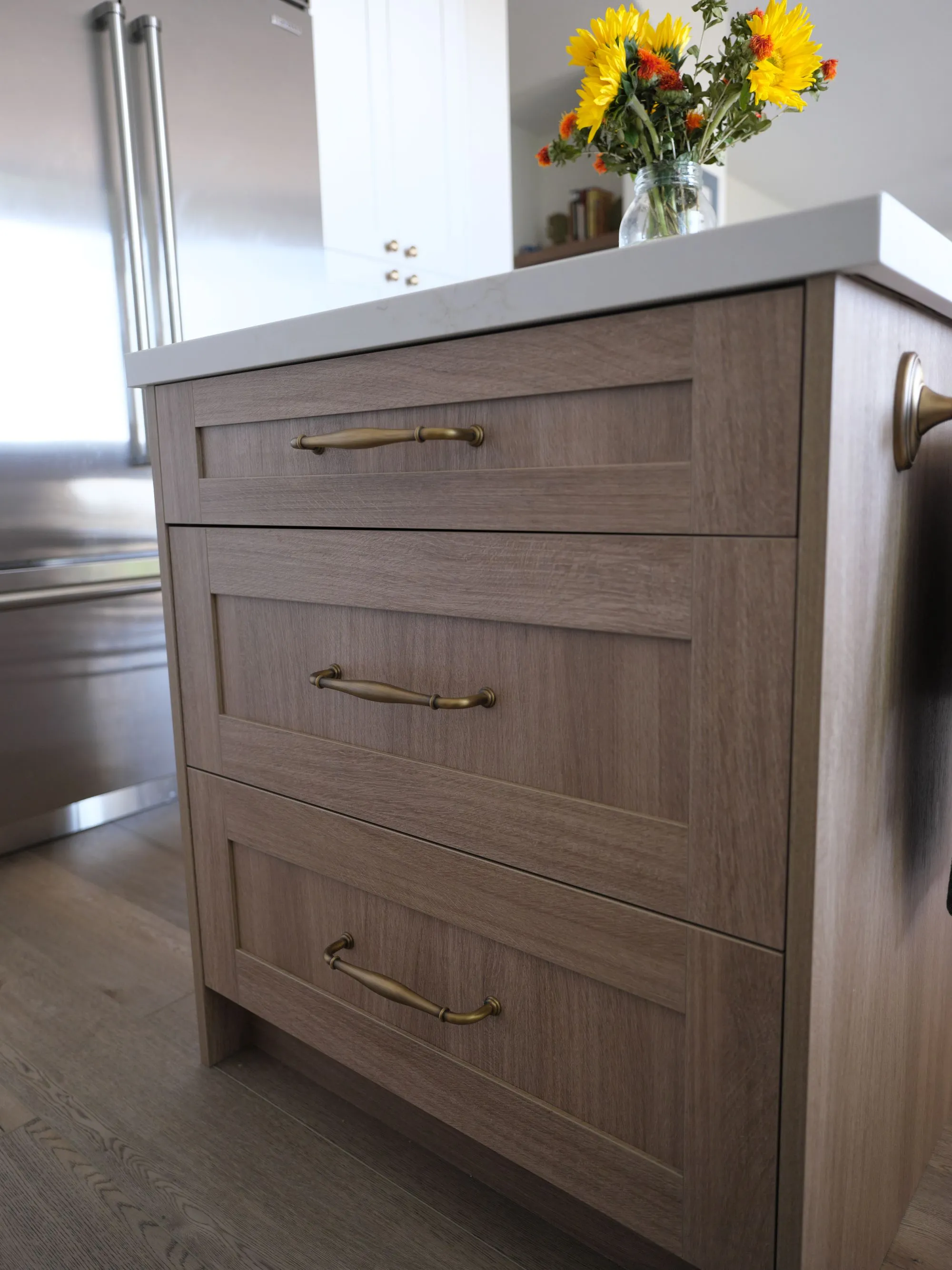
Around HDF, you benefit from a highly stable surface that is less reactive to temperature and moisture variations, even though it does not offer the natural wood grain appearance you might be looking for. Its smooth surface is excellent for paint or thermofoil finishes, and its hardness supports delicate, precise detailing better than most solid woods.
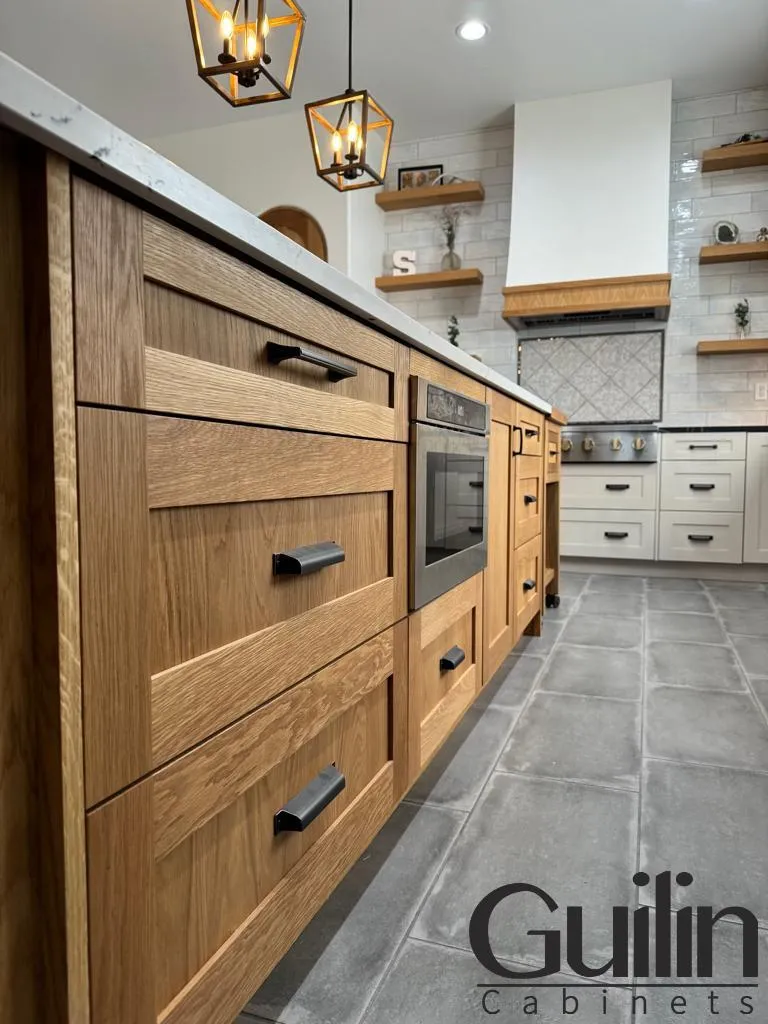
But while solid wood presents unmatched repairability and timeless aesthetic appeal, HDF’s resistance to warping and durability under constant use make it a practical choice when moisture and finish longevity are concerns. Choosing between them depends largely on whether you prioritize natural beauty or resilience and ease of maintenance.
Conlusion: Is HDF Right for You?
Choose HDF cabinets if you:
- Want a smooth, painted look that lasts.
- Need something stronger than MDF but more affordable than hardwood.
- Don’t mind paying a bit more for better durability.
- Are okay with avoiding water damage by sealing and maintaining surfaces carefully.
Avoid HDF if your kitchen has high moisture exposure, or if you’re looking for a natural wood grain look (HDF has none).
Is HDF Good For Kitchen Cabinets ?
Yes, HDF (High-Density Fiberboard) is a good option for kitchen cabinets if: You want a smooth, paintable surface (great for modern or shaker styles). The cabinets are laminated or well-sealed (to resist moisture). You’re on a budget but want better strength than MDF.
What is HDF and how is it different from MDF?
HDF stands for High-Density Fiberboard. It is an engineered wood product made by compressing wood fibers with resin and heat, similar to MDF. However, HDF is denser, harder, and stronger than MDF, making it more durable for high-traffic areas such as kitchen cabinets.
What are the main advantages of choosing HDF kitchen cabinets?
HDF kitchen cabinets are very strong and durable, have a smooth surface ideal for painted and thermofoil finishes, resist warping better than natural wood, and allow for precise detailing in cabinet door designs like shaker or raised panels.
Are there any disadvantages to using HDF for kitchen cabinets?
Yes, some cons include that HDF cabinets are generally more expensive than MDF, they are not fully waterproof and can swell if exposed to water, they are heavier which can complicate installation, and damaged HDF is harder to repair compared to solid wood.
How does HDF hold up in humid or wet kitchen environments?
While HDF is more resistant to moisture than MDF, it is still not fully waterproof. If unsealed edges absorb water, the material can swell or deteriorate. For kitchens with high moisture exposure, additional sealing or alternative materials may be better options.
Is HDF suitable for detailed or decorative cabinet designs?
Yes, because of its hardness and density, HDF allows for clean edges and fine precision detailing. This makes it a good choice for decorative profiles such as shaker doors, raised panels, or other intricate designs.
How does the cost of HDF cabinets compare to other materials?
HDF cabinets typically cost more than MDF but are usually less expensive than plywood. This places HDF in a middle price range, reflecting its enhanced durability and strength compared to MDF.
What should I consider before choosing HDF cabinets for my kitchen?
Consider whether your kitchen is exposed to high moisture, as HDF is not fully waterproof. Also, think about the weight and installation requirements, your budget, and whether you want a natural wood grain look, which HDF does not provide due to its uniform surface.


